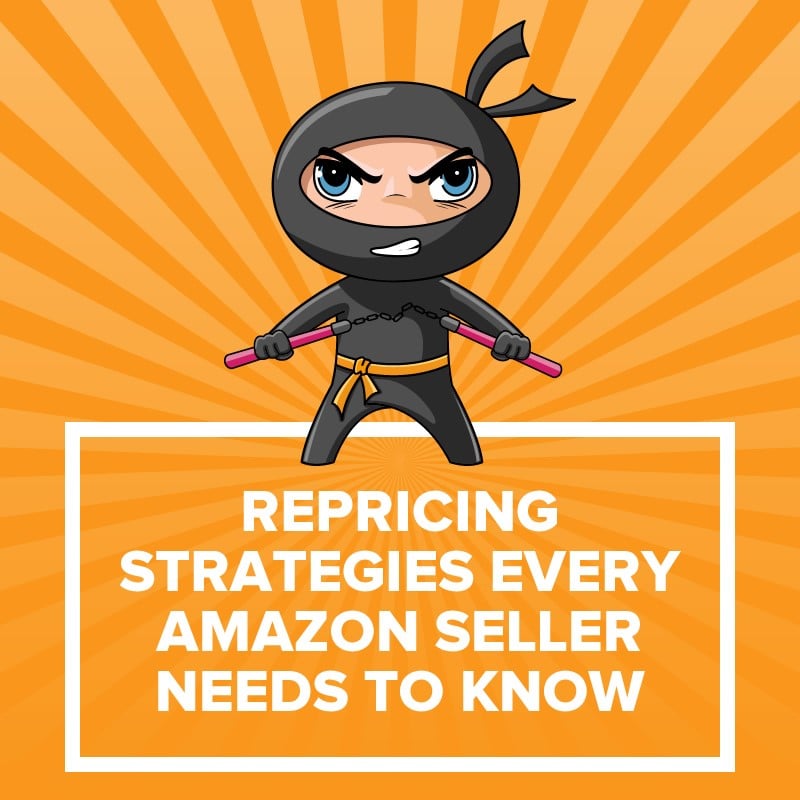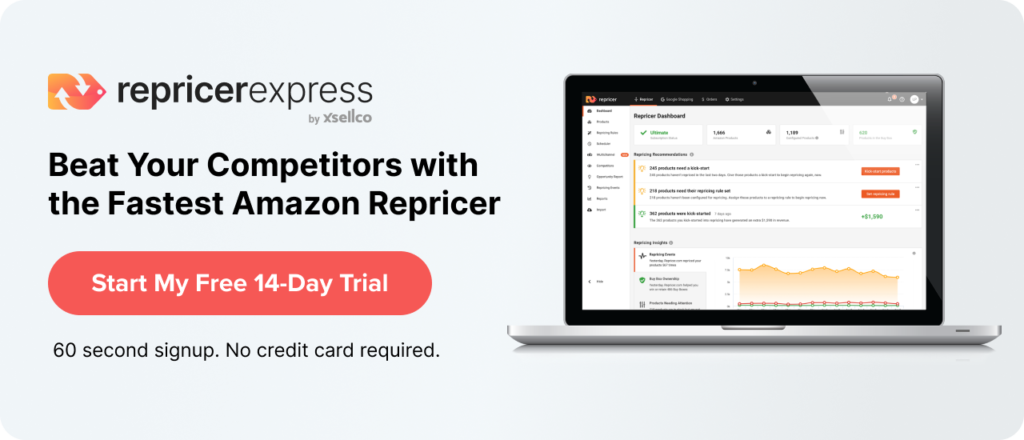Maximising sales and profits is the common goal of most sellers. In this post, we’ll be looking at our top Amazon repricing strategies to help to maximise your sales and profits. To become a successful merchant on Amazon requires you to master many skills.
One of the most important is determining what prices to sell your merchandise at. There are many factors to consider including the price paid for the item, the price of your FBA competition, current sales rank, sales rank history and pricing history.
1. Pricing Too High/Pricing Too Low
If you price too high—you’ll be left with stock that sits around collecting dust—but price too low and things will be flying off your shelves at the expense of your profits. The key is to find that nice middle ground where you can profit nicely but still retain a good customer base.
If you’re a seller on Amazon and want to achieve your Buy Box dreams—then check out this compilation of our favourite pricing strategies. They can be applied manually or by using repricing software, which will allow you to set the prices more efficiently. Someone once said, “money can buy everything except time”, but with a repricing solution, that is exactly what you’re buying.
2. Don’t Be the Cheapest Seller
It’s a common assumption to make: price your wares at the lowest level, and people will flock to your page? Well, yes, they will—but not for the right reasons. If you do it often enough, buyers may associate your products with cheap quality instead of competitively affordable and it’ll quickly become a race to the bottom.
So what we suggest instead is to price your products 1.5% above the lowest seller. This way, you don’t get caught up in a race to the bottom, but are still inexpensive enough to be competitive.
FBA Seller Ryan Grant uses this as his default strategy across 70-75% on his inventory, allowing him to win a share of the Buy Box and maximise the value he receives for each sale.
3. Do as the Others Do
If you don’t want to follow the above repricing strategy, here’s one closely related that works fairly differently. Instead of nearly price-matching the cheapest sellers, turn to your FBA competitors and see what prices they’re using.
Matching the lowest FBA competition will result in an increase in sales but reduce your profit margin. This more aggressive repricing strategy may be useful to help make a quick sale or shift some stock which has been hanging around for a while in Amazon’s warehouses costing you monthly fees. With a repricing solution, you easily set a base price for items which you will never go below, which means you won’t get involved in a price war that hurts your profits.
4. Work Your Intelligence and Experience
We’ll always say to use repricing software such as RepricerExpress because it’s incredibly easy and efficient to navigate, but we also want to encourage you to use your business experience, too. This is because any sort of software program is only as good as the one giving it instructions—you.
And if you’ve reached the point where you’re in need of a repricer, according to FBA seller Jeff Roth, this is usually 50 items or more, then you’ve also got the intelligence and experience to put your repricing strategies to good use.
What we mean by this is doing things like:
- Anticipating competitors’ trends.
- Using past information to make future decisions.
- Realising the difference between an item that’s a lost cause (and in need of a quick sale) and one that just needs a little boost.
- When to use repricing and when to bundle, upsell or do something else to move an item.
5. Identify What Needs to be Repriced First
Before you rush out to stick a virtual ‘for sale’ sticker on your entire inventory, take a step back and evaluate what order you should be repricing things in.
For example, your ‘sitters’ (those pesky products that seem to love the FBA warehouse more than being in a buyer’s hands) should probably get looked at first so you don’t get stuck with outdated stock. Plus, you can avoid Amazon’s twice-yearly long-term storage fee by not having items stay there for more than a year (365 days).
Another strategy is to start at the top in terms of what costs the most in your inventory, and then knock a few dollars off it. Shoppers who’ve had their eye on a high priced item will get excited as the item becomes more affordable.
6. Remember the Principles of Supply and Demand
Repricing is pretty easy when it comes to supply and demand. If there are more items than buyers, then the shoppers can be picky about prices and hold out until it lowers to their satisfaction.
Conversely, if they can’t resist the hottest toy and are in fierce competition with each other, then you can up the price a bit to enjoy a little more profit.
Having your items priced competitively is one of the best ways to increase profits. Some repricing strategies will succeed right away, while with others, you’ll have to do a bit of experimenting. If you’ve got more than 50 items in your inventory, it’s time-consuming to manually reprice every single one of your listings, so it makes sense to use a repricing solution.
Special Offer
As a RepricerExpress reader, you can save time and increase your profits right now. By using the promo code “REX10”, you can enjoy 14 days of Amazon repricing for free (no credit card required), then get a 10% discount on your first month’s subscription.



